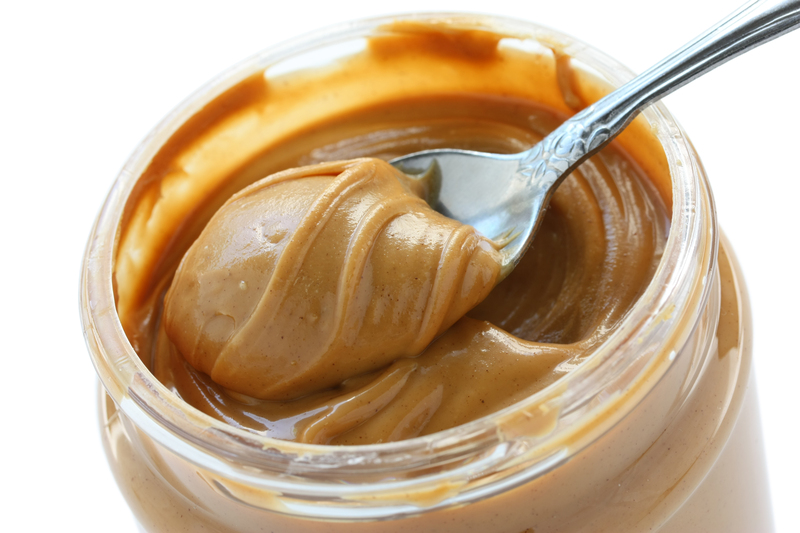Mastering the Art of Curtain Cleaning
Posted on 26/05/2025
Mastering the Art of Curtain Cleaning: A Comprehensive Guide
Curtains play a pivotal role in home aesthetics, contributing to the overall ambiance, providing privacy, and shielding interiors from excessive sunlight. However, over time, they can accumulate dust, allergens, odors, and stains, making curtain cleaning an essential aspect of maintaining a healthy and beautiful living space. In this detailed guide, we'll unveil the secrets to mastering the art of curtain cleaning, covering every step--from understanding your fabric to selecting the right cleaning methods, and revealing expert tips for keeping your drapes looking their best.
Why Curtain Cleaning Matters: More Than Just Aesthetic Appeal
Curtain or drapery cleaning is often neglected, but clean curtains are vital for several reasons:
- Reduces Allergens - Dust, pet dander, and pollen can accumulate, causing allergies.
- Prevents Mold and Mildew - Moisture can foster mold growth, especially in humid climates.
- Extends Curtain Lifespan - Regular cleaning prevents fabric deterioration, prolonging your investment.
- Improves Indoor Air Quality - Cleaner curtains mean cleaner air, benefitting everyone's health.
- Maintains Elegance - Clean curtains uplift the aesthetics of any room.
When Should You Clean Your Curtains?
Most experts recommend deep cleaning curtains every 3 to 6 months. However, high-traffic areas or homes with pets or allergies may require more frequent maintenance. Routine dusting or vacuuming will help you maintain your drapes between deeper cleans.

Understanding Curtain Fabrics and Labels
Every set of curtains is unique, and the right curtain cleaning methods depend heavily on fabric type. Care labels are invaluable, offering crucial information on cleaning recommendations, temperature limits, and whether dry cleaning is necessary.
Common Curtain Materials and Their Cleaning Needs:
- Cotton Curtains: Durable and generally machine-washable, though some may be labeled dry-clean only.
- Linen Curtains: Require gentle washing; high heat can cause shrinkage.
- Polyester Curtains: Easy to clean and resistant to wrinkles; usually safe for machine wash.
- Silk or Velvet Curtains: Delicate fabrics best suited to dry cleaning to retain their texture and sheen.
- Sheer Curtains: Lightweight and prone to snags; gentle hand-washing or specialized laundry bags are recommended.
- Blackout or Thermal Curtains: Often need spot-cleaning or vacuuming as integrated linings may shrink or deform in water.
Tip: Always check for manufacturer instructions on the label. When in doubt, consult a professional curtain cleaning service to avoid damaging delicate materials.
Step-by-Step Guide: How to Clean Curtains
1. Regular Maintenance: Dusting and Vacuuming
Prevent accumulated dirt with routine maintenance.
- Vacuum Weekly: Use an upholstery brush or a soft-bristle attachment on your vacuum cleaner to gently remove surface dust.
- Shake Them Out: Take lightweight curtains outside and give them a good shake to dislodge dust and debris.
- Lint Rollers: For pet hair or fine particles, a lint roller works wonders, especially on heavy drapes.
2. Spot Cleaning Curtain Stains
For minor stains and spills, blot the area gently with a soft cloth and use a mild detergent mixed with water. Test on an inconspicuous area first. Never rub harshly as this can spread the stain or damage the fabric.
3. Washing Curtains: Hand Wash vs. Machine Wash
- Read the Label: Only wash curtains that are clearly marked as washable.
- Remove Hooks and Rings: Always take off hardware to avoid tearing the fabric.
- Pre-treat Stains: Address stains before washing for the best results.
- Gentle Cycles: Use cool or lukewarm water and a mild detergent. Select the gentle cycle if machine washing.
- Drying: Air dry by hanging the curtains back on their rods or laying flat. Avoid direct heat or sunlight to prevent fading.
4. Dry Cleaning Curtains
Some premium fabrics like silk, wool, or heavily lined drapes are not suitable for machine or hand washing. The safest route is professional curtain dry cleaning, which uses techniques and solvents specifically designed to lift dirt and protect fibers.
- Locate a Trusted Cleaner: Look for local services specializing in professional curtain cleaning.
- Inform the Cleaner: Communicate fabric types, color issues, and any specific stains.
5. Steam Cleaning Drapes
If your curtains are labeled safe for steam cleaning, this option provides a powerful way to sanitize and freshen up without removing them from the rod.
- Use a Handheld Steamer: Glide over the fabric in vertical strokes, maintaining a safe distance to avoid saturating or damaging the material.
- Spot Test: Carry out a spot test to check for colorfastness.
6. Curtain Cleaning at Home: DIY Freshening Tricks
If you're not keen on full washes, try these simple curtain cleaning hacks:
- Deodorize with Baking Soda: Sprinkle, let sit, and gently shake or vacuum away.
- Vinegar Spritz: Lightly mist with a diluted vinegar solution to neutralize odors and break down dust.
- Sunshine Freshening: Weather permitting, hang curtains outdoors for 1-2 hours to naturally freshen and deodorize.
Common Mistakes in Curtain Cleaning (and How to Avoid Them)
Mastering curtain cleaning involves more than just soap and water. Be aware of these common pitfalls:
- Using Too Much Water: Over-wetting heavy drapes can lead to prolonged drying and even mold growth.
- Harsh Chemicals: Strong cleaners and bleach can fade colors and break down fibers.
- Scrubbing Vigorously: Rubbing can cause pilling or permanent fabric damage.
- Incorrect Drying Methods: Tumble drying on high heat might shrink or wrinkle curtains.
- Ignoring Sunlight Damage: Drying in direct sun can bleach out vibrant colors.
- Skipping Regular Maintenance: Waiting too long between cleans allows dirt to become embedded and harder to remove.
Expert Tips to Prolong Cleanliness and Fabric Life
Want your curtains to remain immaculate between deep cleans? Try these pro tips:
- Use Sheer Linings: These add a layer of dust protection and reduce fading from sunlight.
- Install Air Purifiers: Cleaner air means cleaner curtains and less frequent washing.
- Keep Windows Clean: Dirty windows quickly transfer dust and grime to your drapes.
- Maintain Proper Ventilation: Reduces moisture accumulation that can lead to mold growth.
- Rotate Curtains: If feasible, switch out seasonal curtains, allowing washed sets to air and rest.
Professional Curtain Cleaning vs. DIY: When to Call the Experts
While many curtain cleaning tasks can be managed at home, certain situations call for a professional touch:
- Large, Heavily Lined, or Expensive Drapes: These are complex to dismantle, wash, and rehang without causing damage. Let professionals handle them.
- Persistent Stains or Odors: Pros use industrial-grade solutions and equipment that deliver better outcomes.
- Delicate Materials: Silk, velvet, and intricate weaves often need specialist care like dry cleaning for best preservation.
- Mold Infestation: If mold has set in, deep professional treatment is crucial for health reasons.
Choosing a professional curtain cleaning service ensures your investment is protected and often extends the curtain's useful life. Many companies now offer pick-up and delivery, even rehanging, making the process effortless for homeowners.
Eco-Friendly Curtain Cleaning Solutions
Sustainability is a growing concern for many homeowners. Fortunately, there are several green curtain cleaning methods that are both effective and gentle on the planet:
- Natural Soaps and Detergents: Choose biodegradable and fragrance-free products.
- DIY Spray Cleaners: Mix white vinegar, water, and a few drops of essential oil for a natural freshener.
- Limit Water Use: Spot cleaning and air freshening reduce the need for full washes.
Note: Always spot-test any homemade cleaner to ensure it doesn't react unpredictably with your curtain fabric.

FAQ: Your Burning Curtain Cleaning Questions Answered
Can I machine wash blackout curtains?
Most blackout curtains are not suitable for machine washing as the thermal lining can become damaged. Instead, follow label care instructions--usually, spot clean or use a gentle vacuum.
How do I remove musty odors from curtains?
A combination of gentle sun airing and a light mist of water with baking soda or diluted vinegar helps tackle odors naturally.
Is steam cleaning safe for all drapery materials?
No. Always check manufacturer instructions. Some delicate fabrics, like silk, should never be steam cleaned.
What if my curtains shrink after washing?
Curtains shrunk by heat or improper washing may be irreparable. Prevent this by sticking to cold water, gentle cycles, and air drying.
Conclusion: Elevate Your Home by Mastering Curtain Cleaning
Mastering the art of curtain cleaning preserves the welcoming beauty of your interiors, improves air quality, and protects your family's health. Whether you opt for regular maintenance, in-depth DIY curtain care, or professional services, paying attention to fabric care labels, cleaning methods, and preventive steps makes all the difference. With the advice above, your curtains will remain a source of pride--clean, fresh, and beautiful for years to come.
Ready to refresh your living spaces? Start mastering curtain cleaning today for a healthier, brighter home environment!





